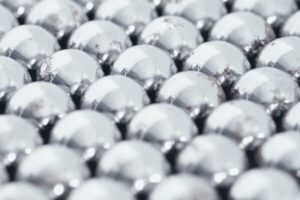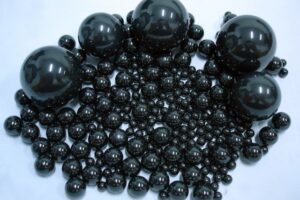Deciding whether to use steel or ceramic balls for your application is complicated. The decision cannot be taken lightly, as both types offer unique advantages and suit different jobs and environments. Choosing the correct material is essential for functionality. What Are Ceramic Precision Balls? Ceramic precision balls are highly engineered spherical components commonly used in…

The Benefits of Using Steel Balls for Grinding & Burnishing
Click to Expand Many metal components undergo burnishing and grinding to increase their durability and smoothness. Using steel balls for these processes offers certain benefits that other materials won’t provide. Learn more about these benefits, as well as the common types of burnishing media. Metal Burnishing Overview Burnishing is a finishing process that hardens and…

What is ISO 3290/DIN 5401
ISO 3290 and DIN 5401 are international and German standards, respectively, that specify the quality and classification of precision steel balls used in various industrial applications, including ball bearings and other machinery components. These standards ensure that the steel balls meet specific size, tolerance, and material requirements to guarantee consistent and reliable performance. ISO 3290:…

Understanding Grade and Tolerance for Industrial Balls
Grade and tolerance are essential specifications for balls, as they impact the performance, precision, and quality in the application. These specifications ensure that the balls are manufactured to precise standards, resulting in smooth and efficient operation. Grades of Industrial Balls Grade: The grade of a ball refers to its overall quality and precision. Balls are…

How to Select the Right Burnishing Media
Choosing the appropriate burnishing media is essential for achieving the desired surface finish, shine, and texture during the burnishing process. Burnishing is a mass finishing technique used to enhance surface properties through mechanical action. The right media selection depends on the material, finish goal, and equipment used. Common Types of Burnishing Media Steel Media: Steel…

How to Select the Right Grinding Media
Choosing the Right Grinding Media for Your Application Selecting the right grinding media is essential to optimizing performance, efficiency, and longevity in grinding operations. The ideal media depends on factors like the material being processed, the desired particle size, the grinding method, and the type of equipment being used. Below are the most common types…

Carbon Steel: Characteristics and Industry Applications
Carbon steel is an alloy made primarily from iron and carbon, with trace amounts of other elements. Its affordability, versatility, and wide range of mechanical properties make it one of the most widely used materials across various industries. Depending on its carbon content, carbon steel can be further classified into subtypes, each suited for specific…

Steel Balls: Applications and Industries That Rely on Them
Steel balls are widely used across a variety of industries because of their key physical properties such as hardness, durability, and corrosion resistance. Their versatility makes them an essential component in many applications. Below, we’ll explore some of the most common industries and uses for steel balls. Key Applications of Steel Balls Bearings: Steel balls…

What Is Chrome Steel? Key Properties and Applications
Chrome steel is widely used to manufacture ball bearings and roller bearings. These are essential components in industries like automotive, aerospace, and industrial machinery. Bearings made from chrome steel can handle high loads and minimize friction, ensuring smooth operation.. Key Characteristics of Chrome Steel: Hardness: Heat treatments like quenching and tempering harden chrome steel. This…

Stainless Steel Balls: Characteristics and Industry Applications
Stainless steel balls are spherical objects made from various grades of stainless steel, known for their corrosion resistance, durability, and mechanical strength. With a minimum of 10.5% chromium, stainless steel forms a protective oxide layer that provides excellent resistance to rust and corrosion. Below, we’ll explore the key characteristics and common applications of stainless steel…

